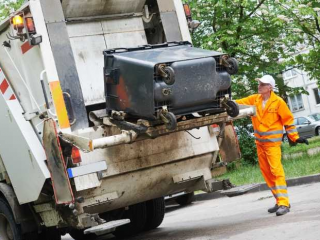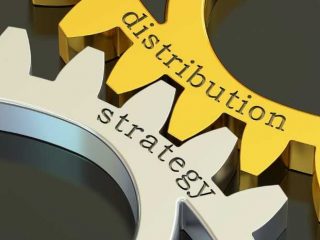A growing number of the U.S. industry’s largest public companies have set new targets relating to their greenhouse gas emissions, or pledged to do so in the coming years.
As pressure mounts for businesses across all industries to formally recognize their contributions to climate change, and capitalize on the opportunities to mitigate its worst effects, the waste and recycling sector could be on the cusp of a historic inflection point.
A growing number of the U.S. industry’s largest public companies have set new targets relating to their greenhouse gas (GHG) emissions, or pledged to do so, though there are still sizable private companies that haven’t taken the step.
Investors and customers are expecting more detailed environmental, social and governance (ESG) reports. Services or technologies that once sounded futuristic or cost prohibitive are becoming a larger part of capital budgets. Complex scientific discussions about carbon sequestration and emissions accounting are becoming more mainstream — with a heightened level of interest ahead of President-elect Joe Biden’s incoming administration.
Whether the waste industry will truly reshape its business model, and how much regulation may drive that, remains to be seen. Some outside observers believe the financial risk of not making substantial changes is too great to ignore. But what was once treated as a sensitive topic by some has now become a more explicit part of how major companies say they plan to do business in the coming years.
“If you ask any company, the moment they constrain carbon in their operations they begin to think differently and they begin to generate a whole bunch of new ideas and innovation,” said Christiana Figueres, a former executive secretary of the United Nations Framework Convention on Climate Change who played a key role in negotiating the Paris climate agreement, during a recent Waste Management event. “They’re not doing this because they want to save the planet, as gorgeous as this planet is, they’re doing it out of sheer business sense. Because it makes business sense to be responsible with the environment and social issues in order to have business continuity.”
Target timeline As ESG expectations evolve, the level of activity among major U.S. waste and recycling players over the past two years is a case study in how specific and ambitious targets are beginning to take priority over a prior period of more general sustainability pledges or incremental goals.
Industry companies of all sizes have long leaned into the sector’s “environmental services” role as part of their image, but none more explicitly in recent years than Waste Management. During a May 2019 investor event, CEO Jim Fish described this as a key part of expanding the company’s multibillion-dollar brand value.
“…I believe five years from now we will be synonymous with sustainability,” he said. “When you think about sustainability, there really isn’t a company that comes to mind. I think we can do it, but we’ll do it in both an environmentally and an economically sustainable manner.”
For 10 years and counting, the company has sponsored the Waste Management Phoenix Open golf tournament, billed as one of the largest “zero waste” sporting events in the world, and worth notable brand value. It has also been expanding a concurrent sustainability forum, featuring high-profile speakers including former Secretary of State John Kerry on global topics spanning well beyond the company’s normal purview, with the goal of staking its claim as the sector’s “thought leader.”
At this event, in January 2019, Fish formally announced a new “moonshot” target to reduce four times the amount of GHG emissions that the company’s operations generate by 2038. He defended that timeframe, in comparison to scientific projections of quicker climate action potentially being needed, by saying growing capital investments in multiple areas were a sign of the company’s sense of urgency.
That summer, Republic Services pledged to reduce its Scope 1 and Scope 2 GHG emissions 35% by 2030. A few months later, it became the U.S. industry’s only company to receive approval by the Science Based Targets initiative (SBTi). France-based Suez received SBTi approval for its own target in 2018. This is largely viewed as the leading corporate target standard, and Republic’s move raised the bar in the eyes of some U.S. industry observers.
From there, other companies in the sector began setting, or pledging to set, targets of their own. Late last year, Covanta committed to set a science-based target by 2022. This spring, GFL (Green For Life) Environmental pledged to release more emissions data within the coming year and set sustainability targets — including GHG reduction — within the next two years. Shortly after, WCA Waste pledged to reduce its GHG emissions 35% by 2030. GFL has since bought WCA — along with divestiture assets from Advanced Disposal Services, which never had an ESG report — and is working that into its plans.
“We’re going to be setting targets at a corporate level so it encompasses all of our operations,” said Jennifer Ahluwalia, GFL’s vice president of environmental responsibility and sustainability, when asked about the fate of the former WCA target. “At this point anything could be on the table… We’ve already developed our GHG inventory, so for us the process is more about what’s the strategy behind the target and the philosophy behind the target we set.”
“We don’t view ESG as something that changes how we run our business. You still want to run a good business, these are just additional opportunities to continue to reinvest in our business.”
As others joined in, Waste Management recently announced new interim 2025 targets to help reach the long-term 2038 goal.
“Really everything we do, environmentally, rolls into the goal. But we also looked at it and said, well 2038 is a long time away. We probably should develop something that’s sooner, a little bit more tangible,” said Susan Robinson, senior director of sustainability and policy. “Our leadership team really understood the value of having shorter-term targets that we could be working towards.”
This fall, Waste Connections also came out with a pledge to “increase offsets to emissions by at least 50%” by 2035. According to CFO Mary Anne Whitney, the company had been waiting in part to gather multiple years of baseline data following the 2016 acquisition of Progressive Waste Solutions that essentially doubled its size. She said the company also recognized growing demand for more public accountability around ESG — to help ensure “there isn’t a misconception about the industry” — and details on strategies that may already be part of normal business.
“We don’t view ESG as something that changes how we run our business. You still want to run a good business, these are just additional opportunities to continue to reinvest in our business,” said CEO Worthing Jackman. “We haven’t been very transparent and visible in how we do things and communicate things, and that’s what we’ve been changing.”
That concept of ensuring ESG feeds into a company’s core strategy, rather than drives action or investment toward a target that may not be considered financially beneficial by all stakeholders, is a recurring theme.
“The companies are approaching this with a belief that environmental sustainability and economic sustainability need to be tightly linked,” said Noah Kaye, managing director and senior research analyst at Oppenheimer & Co., who noted earlier this year that assessment metrics are still in the early stages. “What’s important from our perspective is that the companies continue to make an effort to increase their reporting, to increase the transparency, to set clear benchmarks and to make progress against those benchmarks.”
While this flurry of activity may be notable, it’s also not the first time a U.S. industry company has acted on such a pledge. Casella Waste Systems touts achieving its own 45% reduction in Scope 1 and 2 emissions between 2005 and 2010 as part of the U.S. EPA’s former Climate Leaders program.
“If you look at the history of the company, this was at a time in our strategic planning where we began to realize that the business model that the waste industry had relied upon for half a century was no longer going to be a good model for the next 50 years,” said Vice President Joe Fusco. “Having been a Vermont company, you’re just kind of genetically sensitive to opportunities like this… but we also think that we kind of started to think of ourselves a little differently as a company, before some of the others.”
Casella will be announcing targets in an upcoming ESG report that include reducing Scope 1 and 2 emissions 40% by 2030, against a 2010 baseline, according to a new CDP report.
Yet aside from Rubicon and Wastequip — which pledged this year to disclose GHG data or launch related initiatives in the future — many large service providers or industry-specific equipment manufacturers have not taken the same steps. Recology publishes sustainability reports, including a GHG emissions inventory, but does not currently have a reduction target. Waste Pro, Rumpke, Wheelabrator, Interstate Waste Systems and other major MSW-focused companies do not currently publish ESG reports, though some are exploring it.
“Industry is obviously paying more attention, but I think as you look across the companies, you get into some stratification pretty quickly,” said Pete Keller, Republic’s vice president of recycling and sustainability, when asked for his assessment of the sector. “There’s a few companies in my mind that are in a leadership role. There’s some other folks that are kind of playing in the middle, and then there’s some people that are just getting started. So I would suggest that three, four, five years from now, the industry will be a lot more mature than it is today.”
As companies of all types consider targets, the other factor they’ll need to keep in mind is how to deal with the industry’s perpetual organic growth and expansion through acquisition. Multiple companies said ESG pressures could be a potential factor in consolidation trends, as smaller companies might not be prepared for the higher capital intensity of this accelerating trend.
“We fully expect to grow as a company. So as our business gets bigger, that reduction target gets larger,” said Keller. “[We’re] working on a number of different strategies to ensure that we have opportunity to achieve that goal by 2030, but we fully recognize it’s ambitious and we don’t fully know how we’re going to get there.”
Weighing the risks Just because many large industry companies only recently set GHG targets doesn’t mean they’re new to the issue. The economic case for ramping up ESG actions and managing emissions is predicated on many elements, and the risk of continuing the status quo is one of them.
The broader waste sector was responsible for 110.3 million metric tons of carbon dioxide (CO2) equivalent in 2019, according to data from the U.S. EPA’s Greenhouse Gas Reporting Program (which emitters of a certain size have been submitting to since 2010). The waste sector ranks as one of the highest reporting contributors, behind facilities classified under categories such as power plants, oil and gas, non-fluorinated chemicals, refineries, and minerals.
While reported emissions in the waste sector have remained relatively flat over the years, industry companies and engineers maintain this system is not the most precise approach for tracking emissions from the greatest source by far: landfills. “Municipal landfills” comprised 82.5% of reported waste sector emissions last year, according to the EPA, followed by “solid waste combustion” at 8.4%, “industrial landfills” at 7.3% and “wastewater treatment” (not under the solid waste industry’s purview) rounding it out.
“We measure what we capture in our landfill gas-to-energy systems, but the rest is modeled according to EPA, and we think we do much better than that modeling indicates,” said Robinson of Waste Management.
The industry has long debated this accounting standard because it doesn’t calculate emissions as specifically as they feel it should. The industry worked to develop its own standard, the Solid Waste Industry for Climate Solutions methodology and multiple companies now indicate this standard as a factor in their reporting. As one example of ongoing efforts to refine the emissions discussion, one of Waste Management’s 2025 targets is to establish a system for measuring fugitive emissions that could use satellite technology.
Beyond the optics of emissions potentially appearing higher than they may be, this area is especially relevant as methane — emitted from the decomposition of organic material — is upward of 84 times more potent than CO2 on a 20-year timescale. Existing regulatory overlap at the national level on emissions requirements is also projected to have high compliance costs, and if some form of carbon pricing system expands beyond the state and provincial level, this difference of opinion on measurement could become even more relevant. Earlier this year, at an industry event in California, speakers estimated a national carbon pricing system could cost the sector more than $138 million in the first year alone.
And while the sector is looking to lower its emissions profile in multiple ways, financial filings from many of its largest operators regularly note that any dramatic reductions in waste headed to landfills or other destinations could be costly. This could be driven by new policies, such as extended producer responsibility (EPR), which is starting to become slightly more palatable to the sector, among many proposed packaging-centric regulations that could be disruptive. Waste Management, for example, estimates changes to its recycling programs due to packaging reductions or lost contracts (including EPR or other reasons) could cost up to $300 million per year.
While many companies maintain they can adapt to regulations, the potential risk of this happening at a pace the industry isn’t comfortable with is an area they track.
“I think it’s important that legislative bodies have relationships and stay informed with the private sector on what’s possible with these assets over time, versus just promulgating rules in a vacuum,” said Jackman of Waste Connections. “So I think the risk is legislative bodies not being on the same page.”
“The real question we have to answer as a society is how do we stop having so much stuff to pick up?”
The prospects of major national policy may be less certain in a potential divided government scenario next year, but public pressure around disposal is expected to continue. And when viewed through the broader lens of sustainable materials management — which takes into account the full lifecycle effects of extracting resources to manufacture, transport and dispose consumer goods — the potential climate benefits of shifting toward a more circular economy are notable. According to the EPA, materials management is responsible for an estimated 42% of all U.S. GHG emissions.
“In the U.S., notoriously compared to other developed countries, our cost of landfilling is extremely low. And so that perpetuates an undesirable activity from an environmental standpoint,” said Corinne Rico, senior project manager at consulting firm Gershman, Brickner & Bratton (GBB). “We’re only thinking about the cost today, but what about the costs for the lifetime management and environmental mitigation and remediation of those sites? What about the lost value of all of those materials and the embodied carbon and energy that went into it, of all those materials that are thrown away?”
Rico notes this also doesn’t factor in opportunities and benefits of landfill diversion, such as job creation and overall resilience. As Rico and others point out, part of bending the curve on emissions from waste is reshaping the nature of consumption through a sustainable materials management lens. This means rethinking product design, prioritizing waste avoidance upstream and designing infrastructure to better facilitate reuse and recovery, among other priorities.
Even if the sector’s largest service providers pivoted to a scenario where the majority of material they collect and manage is not disposed — which is not currently the case outside of certain regions — that transition could be financially painful.
“The real question we have to answer as a society is how do we stop having so much stuff to pick up?” said Andrew Winston, an author and corporate sustainability advisor who once spoke at Waste Management’s forum, in an interview earlier this year. “The problem of course is that in the short run it sounds like a recipe for smaller quarterly profits to say we need to have less waste.”
Winston said mitigating the worst effects of climate change will require all parts of society working toward reaching “very close to a zero waste world.”
“We’re looking at systemic collapse from climate change and overuse of resources that will drag down the economy and hurt all businesses. That’s the bottom line,” he said. “So if we get to a dysfunctional society it doesn’t matter if you’re really good at managing landfills.”
While the worst effects may be yet to come, industry companies are contending with extreme weather events on a regular basis. All have long maintained plans for managing blizzards, hurricanes, floods, wildfires and more, with notes in various disclosure reports about potential costs of damaged assets and disrupted operations. At the same time, multiple reports also referenced the financial upside from managing large volumes of disaster debris. Few interviewed chose to make a direct link between employee safety and climate change, but at least one recognized increasing operational challenges in this area.
“It’s something we’re talking a lot about because that seems to be the norm, especially the areas that we service,” said Recology COO Sal Coniglio, about the uptick in serious wildfires on the West Coast that create hazardous service conditions. “There’s definitely something going on with the climate out here. It seems the wet season keeps getting pushed out further and further and then we’re just experiencing a lot of dry conditions.”
The expectation that these types of extreme events could continue to occur on a more frequent basis is a driving force behind the Paris climate agreement’s goal to keep global temperature increase to well below 2°C by 2030. This timeframe is at the center of the SBTi approach, which has now signed on 1,045 companies and counting, and is also driving interest in forthcoming guidance for targets to reach “net zero” emissions by 2050.
As these trends evolve quickly — net zero targets are becoming a more common strategy in other sectors, for example — another potential risk is that existing targets not currently approved by a third-party as science-based, or not considered specific enough to meet the expectations of outside stakeholders, may be viewed as out of step. In a hypothetical scenario where net zero targets do become the new norm, it could mean widespread change in the sector.
“In this particular context… it would be about the waste industry, by 2050, eliminating all the emissions from their sector. And for those emissions, that they can’t eliminate, they will tap into what we call removals or compensation mechanisms to neutralize those emissions,” said John Sottong, a senior associate at the World Resources Institute who manages SBTi’s technical working group.
If companies don’t currently have targets, or targets that may be as specific or ambitious as others, Sottong sees the value in them getting engaged however they can as soon as possible.
“The longer you wait, the steeper your curve will be,” he said. “Every year that passes by where the global economy does not track to what needs to happen, the slope for achieving what we need to achieve gets steeper and steeper. So time is not our friend at this point.”
Plentiful opportunities As the industry adapts to greater expectations around climate risk disclosure, it also has the chance to expand in ways that can reduce emissions and grow business.
“Reducing our direct emissions is part of that risk, but we think the other, and frankly bigger, part of the story is the opportunity,” said Abbie Webb, sustainability director at Casella. “We’re really in a great position as an industry to be a driving part of the climate solution.”
Casella and other companies often reference plans to expand sustainability consulting offerings, recycling and organics services, and landfill gas-to-energy projects, as areas for opportunity in their ESG reports. Multiple companies mention increasing resource recovery volumes in their targets and also see a potential secondary benefit of reducing emissions from disposal as the composition of MSW changes and the prevalence of certain emissions-heavy materials decreases. For example, Waste Management often cites the potential for a $100 million revenue boon if its recycling revenue rose by 5% and describes its CORe organics pre-processing technology as a $650 million annual opportunity if tip fees are equivalent to disposal.
When it comes to organics, many major companies report making investments in pre-processing systems, aerated static pile composting operations and other types of technology to expand these offerings. Though for the most part this activity is largely still concentrated to areas with current or upcoming regulatory requirements, such as California. To date, none are making investments in large-scale anaerobic digestion facilities, though outside competitors are increasingly active in that area.
On the recycling side, the investment in new or upgraded MRFs is more common around the country — especially if local contract structures have adapted to current market conditions, among other factors. Robotics and advanced technology are increasingly common at these facilities, as pricing becomes more competitive, and major companies report collectively spending hundreds of millions of dollars on upgrades. Beyond the financial opportunity of servicing current customers, companies are also watching for the potential effects of brand recycled content pledges and laws (such as California’s) to drive up the value of certain feedstocks, especially plastic.
Keller of Republic called plastics “the big challenge in the marketplace today” in terms of growing recycling activity, given currently low market values for multiple resins. Recology, which recently spent $4.7 million on a pandemic-delayed California ballot initiative to tax certain types of plastics products and direct the funding to new environmental initiatives, framed the area in terms of emissions reduction as well.
“More recovery infrastructure will help result in less material sent to landfill, and fewer emissions from the landfill,” said Coniglio, noting broader benefits as well. “Plastic production is energy intense and relies on fossil fuels. So decreasing that volume of plastic produced or sold in the state will help decrease emissions.”
Another key opportunity major companies are pursuing is converting fleets to diesel alternatives. Fleet emissions generally make up the largest share of Scope 1 emissions behind landfills for each company.
Recology has a target to power 90% of its fleet with renewable or alternative fuels by 2022. Waste Management aims to run 70% of its collection fleet on alternative fuels by 2025, with a current focus on compressed natural gas (CNG), and plans to draw on an increasing amount of renewable natural gas from its own operations. GFL and Casella also remain focused on CNG, though the latter said sparse rural gas infrastructure has been a limitation, while each are also watching electric vehicle opportunities.
FCC Environmental Services, the U.S. subsidiary of a major international conglomerate based in Spain that has its own broader climate goals, has a relatively clean slate given its recent entry into the national market. The company anticipates increasing its fleet composition from 34% CNG last year to 70% by 2025, due in part to municipal demand.
“Large cities and counties typically ask for CNG fleet in the RFPs. Other smaller cities are not, because it depends very much on the availability of having CNG fuel,” said CEO Inigo Sanz. “Most of our contracts are big and as long as we can propose CNG this is always our preferred option.”
While multiple companies are also considering or engaged in electric vehicle efforts, Republic has made the biggest commitment by far with its multi-thousand truck order, along with other purchases, and investment in a battery technology company. Executives regularly outline expectations for maintenance and fuel savings as this scales up, and Republic’s CDP report notes rising diesel fuel costs among potential climate risk. During the company’s latest earnings call, President Jon Vander Ark said the company was “very bullish on electrification long term.”
Waste Connections has similarly shifted its focus to electric, which trade groups and analysts anticipate will eventually become even bigger than CNG has been for the sector, but believes it may take time to adopt at scale. Jackman estimated his company would be doing well to eventually have access to 100 new electric trucks per year in the medium term, at an estimated cost of $50 million to $75 million. Those purchases would become part of normal fleet replacement expenditures, but have not been factored into a $500 million pledge made toward ESG spending over the next 15 years.
“That’s very impactful. That’s an exponential number on top of the $500 million as you see that playing out over time,” said Jackman.
“I believe five years from now we will be synonymous with sustainability”
The push toward electrification could present opportunities for others as well, such as operators of facilities generating energy that currently struggle to compete with low power pricing from other sources.
“We hope that our facilities will become integral in the electrification of transportation,” said Covanta spokesperson James Regan. “They’re going to need a baseload source of electricity, and we’re in densely populated communities with lots of truck travel. We can remove those emissions from trucks that are coming to our facilities.”
Covanta notes its facilities can generate much more energy per ton of waste than landfill gas capture systems. It also sees potential to support microgrids — a commonly discussed element in climate resiliency planning — and has sold carbon offset credits from two facilities. Though the company views the broader possibility to start viewing its incinerators as an “engineered technology platform” in a low-carbon economy as among the most appealing as climate action ramps up, pointing to assessments by the EPA and international entities that describe combustion as a preferable alternative to landfilling.
“When we start looking at getting to net zero carbon by 2050… we start thinking about carbon capture and utilization, carbon capture and storage. You can’t apply that kind of a technology to a landfill,” said Mike Van Brunt, senior director of sustainability. “We’re in a position where we can actually go net negative, because we would be pulling biogenic CO2 out of the system. And that’s a very unique opportunity that you don’t see a whole lot of parallels in many other industries that are out there.”
The profile of Covanta and other incinerator operators has long been touted as favorable if and when carbon regulations ramp in the United States, with board chairman Sam Zell saying in a recent earnings call the company has a strong ESG story to tell because “we’re trying to close all American landfills.”
Landfill operators are not ready to be counted out in a low-carbon future, seeing plenty of room to stay viable — and not just from serving as key infrastructure to handle debris from extreme weather events.
“Something that the industry is hoping for… is potential tax credits for carbon oxide sequestration,” said Anne Germain, COO and senior vice president of regulatory affairs at the National Waste & Recycling Association (NWRA). “The carbon dioxide that goes out from the landfills is considered biogenic, part of the natural carbon cycle. However, we’re thinking that if there was a way that could also be captured and sequestered then that would help reduce carbon emissions.”
The group submitted comments on a proposed tax credit earlier this year, as did Republic, asking for the inclusion of landfills and pointing out how sites could potentially be engineered to capture carbon.
Jim Little, executive vice president of engineering and disposal for Waste Connections, said the potential for carbon sequestration at landfills “can’t be ignored, it really is a big deal” and believes the industry can do more to educate regulators and investors. In his view, this is one of multiple considerations that will set the company up to participate in whatever comes next.
“There’s going to be a lot of regulatory change, a lot of behavioral change coming in the next decade. And we’ve been very thoughtful about where we’ve positioned the company to do all that,” said Little.
Keller of Republic is also watching the potential for “low carbon products,” such as building materials made with sequestered carbon. Multiple companies, especially Recology, are also focused on potential sequestration benefits from composting. Also citing organics, Webb from Casella predicted “carbon sequestration is going to be huge” in the coming years.
All of these discussions — especially carbon capture at certain types of facilities — are still viewed as in the early stages at the international level. Based on discussions in the European Union that are farther along from a regulatory standpoint, consulting firm Eunomia said the best path would be for U.S. landfills to focus on reducing volumes of organic materials and incinerators to focus on reducing plastic volumes as one way to manage their CO2 emissions.
“The best thing that waste management companies can do is work with their clients to increase recycling, both of organics and recyclables, the carbon benefits of which are significantly greater,” said Sarah Edwards, CEO of Eunomia’s North American division. “The more we can replace primary with secondary materials in the supply chain, the greater the carbon benefit as most carbon is generated in the production of goods not the end-of-life management.”
New decade, new administration As the U.S. waste and recycling industry pivots to face the risks and opportunities around climate change — or accelerates ongoing efforts, depending on who you ask — the coming decade could be potentially transformative. Whether major players can and will step up to meet new targets around resource recovery activity, to levels never seen before in the sector, is very much an open question. At the same time, if current societal trends continue to shift toward prioritizing a more circular economy then a shift may be inevitable.
During an appearance at Waste Management’s annual forum back in January, pre-pandemic, Christiana Figueres said the world would need a “radical regeneration” to pivot away from the linear economy and said the company “should actually change its name” to reflect that.
“This is not about managing waste, this is actually about completely radically eliminating … the outmoded concept of waste. It is about understanding that we have to keep all our resources in a constantly evolving reuse cycle,” she said.
Asked to respond recently, Waste Management’s Robinson recently said she feels the company has “already made that shift” and “we will continue to make that shift.” As noted by Fish in a recent pre-election earnings call, the potential for a new presidential administration could present its own opportunities just as prior national laws have in past decades.
“We’re so regulated already, that we tend to be able to adapt regulations. We are seeing so much legislation at the federal level proposed now, that we haven’t seen in our industry in decades… I certainly also see a lot more legislation at the state and the local level that impacts us in different ways,” said Robinson. “I think we should expect to see that dialogue take place at all levels of government.”
While the balance of power in the Senate remains unclear, executives speaking broadly ahead of the election said they anticipated certain shifts under a Biden administration. As one example, incentives for companies to procure more renewable energy would help their emissions, and conversely the potential for waste companies to sell various forms of energy from their own operations at a higher value could boost profits. Solar panels on capped landfills are one area of interest, but biogas projects are seen as one of the biggest opportunities.
Projects to capture landfill gas and convert it into various forms of energy — a double benefit that also mitigates emissions generation — were expected to become more financially attractive based on evolving renewable energy policies and possibly scalable beyond their current footprint at a range of different sites.
“It becomes an increasingly more valuable piece and higher percentage of the revenue and the profitability of the business as we monetize the gas that we’re all generating on a daily basis,” said Jackman of Waste Connections. “If there’s a change in administration, and a look at renewables and the expanded investments in renewables, I think the assumption is that the value of green gas and renewable credits will have a nice floor to them, and likely some upside.”
Beyond the potential for more stable renewable energy pricing, the sector is also watching for the possibility of more sweeping national or state proposals.
Casella’s Fusco said “I don’t think we could be surprised by anything,” based on the company’s experience in more regulated Northeast states. GFL had a similar outlook, given its origins in Canada.
“Related to carbon policy or EPR, we do have a lot of experience working in jurisdictions that have those things in place and we look forward to participating in more if that’s the direction that things go in,” said Ahluwalia, adding in the right scenario a carbon pricing system could “actually be quite favorable” for the industry.
Another potential change that could be coming, and may not require Congress, is new voluntary or mandatory expectations around ESG reporting and disclosures. Germain of NWRA said she thinks this could be done in a way that is not overly burdensome to companies that may not already be participating.
“How can you demonstrate this with a couple of metrics that are kind of like your canaries in the coal mine? If we show you this metric that represents a much larger implication. If we give you this one number, you can basically extrapolate and assume that we’ve made good on a bunch of other things,” she said. “It’s not about not being transparent. It’s just about how much time and effort you’re going to dedicate to trying to demonstrate that accounting.”
Another lingering factor of the pandemic, which many companies said they were watching for but had yet to encounter as a major hindrance to ESG efforts, could be limited budgetary capabilities of public or private sector customers that previously might have partnered on new initiatives.
“I do think that the current fiscal problems that most cities are facing is going to make it challenging to move quickly in this area, but I do think that this is a big priority for many local governments,” said David Biderman, CEO of the Solid Waste Association of North America.
Even without regulatory change, market demand from certain types of large corporate customers or sustainability-focused local governments is expected to continue as a motivating factor. Though some feel national policy is likely still the best way to avert the worst effects of climate change.
“Seeing that type of action, on a corporate level, has been a nice bright spot in what otherwise has been a relatively devoid space in terms of federal climate and waste policy,” said Van Brunt of Covanta. “We will continue to focus on what the states are doing, but I would certainly like to see eventually some of federal level leadership in terms of addressing climate change.”
As the incoming administration focuses on recovering from the pandemic, while also pledging to work on climate, that could present an opportunity for the next wave of green infrastructure investment. According to Rico of GBB, it could also present an opportunity to rethink calculations around “the full financial, environmental, and societal costs and benefits” of various materials management options, and the role they can play in creating a more resilient society.
“If we don’t address the impacts of climate change and how we’re contributing to that, the next pandemic or the next natural disaster is going to have just as big of an effect, if not more,” she said. “It’s about not just recovering from the immediate impacts, but recovering better, making a more sustainable and more resilient recovery. So that we can build back better than we were before.”
This article was originally published by Cole Rosengren, www.wastedive.com.



























